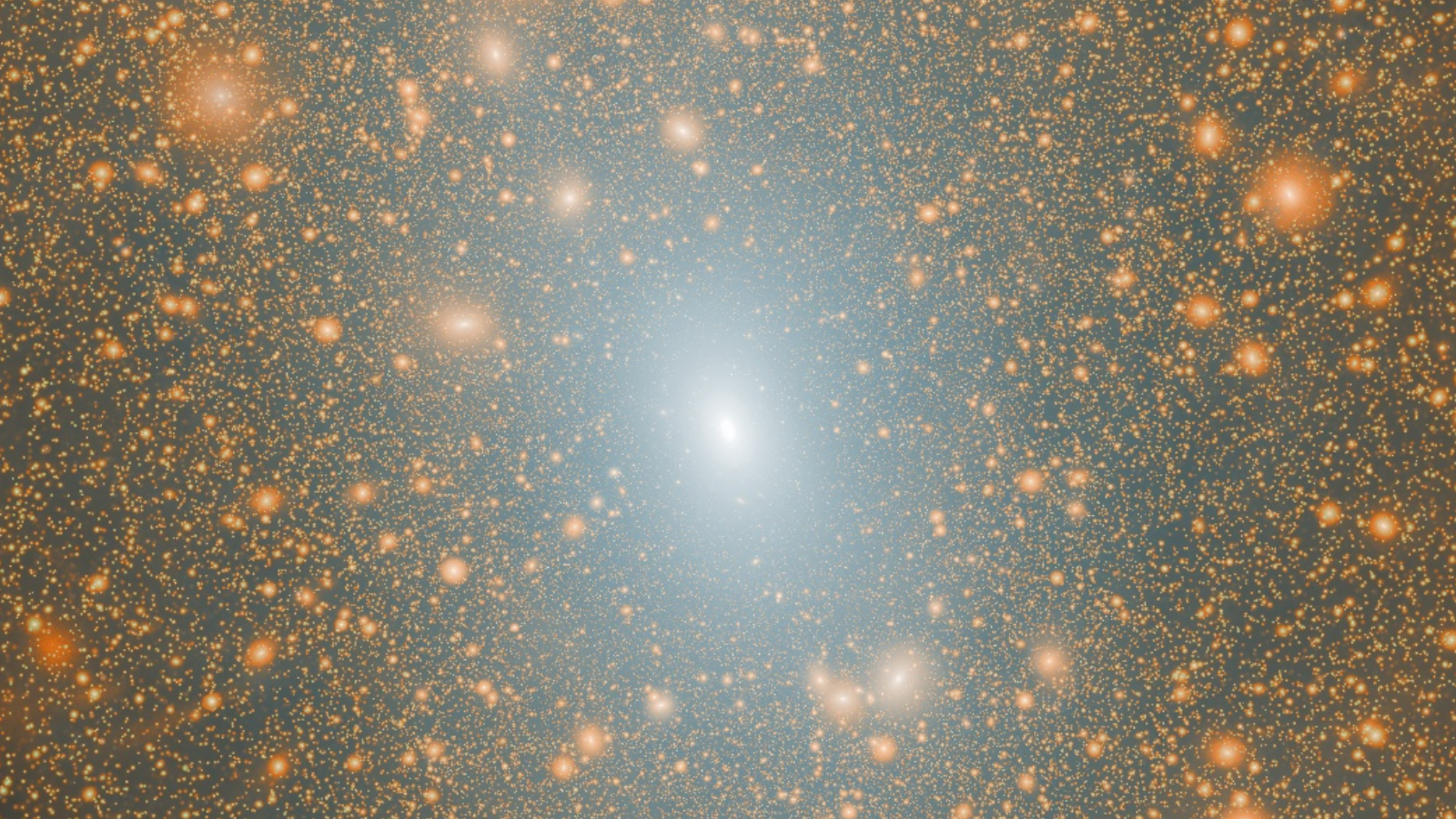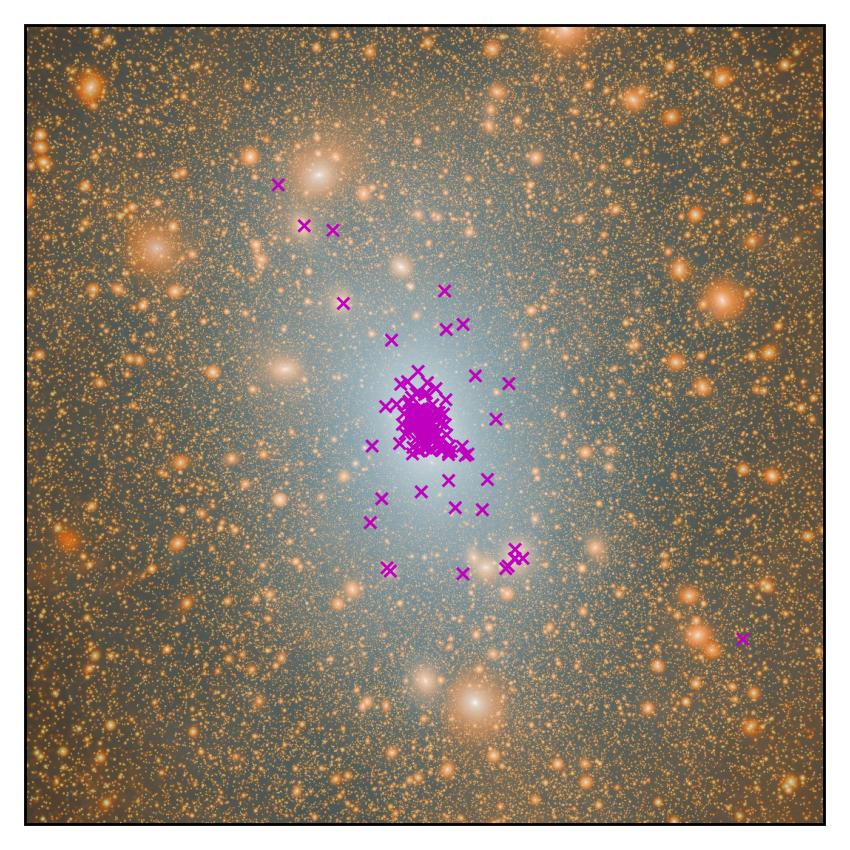Our Milky Way galaxy may be surrounded by 100 undetected 'orphan' galaxies
"One day soon we may be able to see these 'missing' galaxies, which would be hugely exciting and could tell us more about how the universe came to be as we see it today."

Our cosmic neighborhood may be far more crowded than previous estimates have suggested. New research hints the Milky Way could have many more small dwarf galaxy "satellites" around it than expected.
The team, comprised of cosmologists from Durham University, combined supercomputer simulations with mathematical modeling to predict the existence of missing Milky Way "orphan" galaxies. The researchers' novel technique suggests that as many as 100 extra satellite dwarf galaxies could orbit our large, spiral galaxy.
This has ramifications that extend way beyond our own patch of space, however. Should these orbiting orphans be detected, they could bolster support for the standard model of the universe, the Lambda Cold Dark Matter (LCDM) model. The LCDM is our current best explanation for the large-scale evolution and structure of the entire cosmos.
"We know the Milky Way has some 60 confirmed companion satellite galaxies, but we think there should be dozens more of these faint galaxies orbiting around the Milky Way at close distances," Isabel Santos-Santos, study team leader and a researcher at Durham University, said in a statement. "If our predictions are right, it adds more weight to the LCDM theory of the formation and evolution of structure in the universe."
Challenging our understanding of the cosmos
The LCDM model of the universe posits that around 70% of the cosmic matter and energy budget in the cosmos is accounted for by dark energy, the mysterious force causing the expansion of space to accelerate. The equally mysterious dark matter is the next greatest contributor to that budget — accounting for 25%. "Ordinary matter" made up of atoms comprised of electrons, protons and neutrons accounts for just 5% of the matter and energy in the universe, according to this model.
The LCDM model further suggests that galaxies formed where vast clumps of dark matter once congregated; the dark matter would've then formed haloes around each budding galaxy. These dark matter haloes are now suspected to surround galaxies, stretching much further beyond a galaxy's visible matter content, like stars and gas.
Most galaxies in the cosmos are predicted to be low-mass dwarf galaxies orbiting larger galaxies, like the Milky Way — but this bit is challenging for the LCDM to explain. That's because the standard model of cosmology suggests there should be way more satellite galaxies around the Milky Way than are seen through observations and predicted through simulations.
Breaking space news, the latest updates on rocket launches, skywatching events and more!
This new research — in part based upon the Aquarius simulation which is the highest-resolution simulation of a Milky Way dark matter halo ever generated — implies that the "missing" satellite galaxies of the Milky Way are both extremely faint and have been stripped of their own dark matter haloes.
The simulation, performed on the Cosmology Machine (COSMA), predicted anywhere between 80 and 100 of these unseen orphans.
Not only did Santos-Santos and colleagues track just how many of these orphan galaxies should surround the Milky Way, but they also estimated where the galaxies should be distributed — and even what properties they should have.
They believe previous cosmological simulations have failed to account for these galaxies. This is because it's possible those simulations lack the precision needed to track the evolution of small dark matter halos around dwarf galaxies over billions of years as these galaxies orbit the Milky Way.
Though the galaxies are indeed "orphaned" in those simulations, they survived in the team's models thanks to the novel approach to creating the models; and, according to this research, the galaxies should survive in the real universe, too.
The team points to 30 recently discovered objects that could be satellite galaxies of the Milky Way, suggesting they could be a subset of the orphan galaxies predicted in this research.
"If the population of very faint satellites that we are predicting is discovered with new data, it would be a remarkable success of the LCDM theory of galaxy formation," Carlos Frenk, study team member and a researcher at Durham University, said in the statement. "It would also provide a clear illustration of the power of physics and mathematics. Using the laws of physics, solved using a large supercomputer and mathematical modelling, we can make precise predictions that astronomers, equipped with new, powerful telescopes, can test.
"It doesn't get much better than this."
The team's research could act as a guide for future astronomy projects such as the Vera C. Rubin Observatory, which could have the observing power needed to spot tiny and faint orphan galaxies.
"Observational astronomers are using our predictions as a benchmark with which to compare the new data they are obtaining," Santos-Santos said. "One day soon we may be able to see these 'missing' galaxies, which would be hugely exciting and could tell us more about how the universe came to be as we see it today."
The team's results were presented on Friday (July 11) at the Royal Astronomical Society's National Astronomy Meeting at Durham University.

Robert Lea is a science journalist in the U.K. whose articles have been published in Physics World, New Scientist, Astronomy Magazine, All About Space, Newsweek and ZME Science. He also writes about science communication for Elsevier and the European Journal of Physics. Rob holds a bachelor of science degree in physics and astronomy from the U.K.’s Open University. Follow him on Twitter @sciencef1rst.
You must confirm your public display name before commenting
Please logout and then login again, you will then be prompted to enter your display name.

